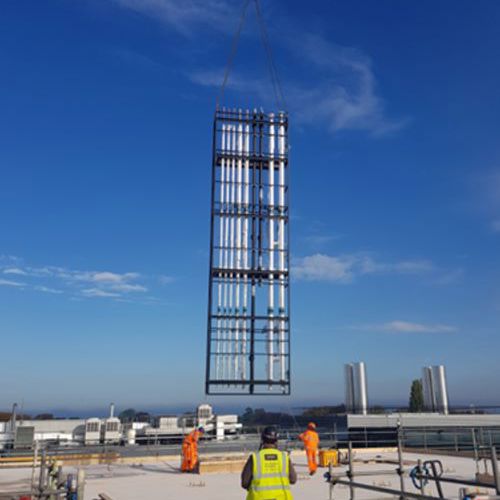
At a glance
Client/project partners: Oxford Biochemistry Building
Status: Complete
Location: Oxford
A successful relationship with the University of Oxford spanning over 20 years
Our relationship with the University of Oxford spans over 20 years, and we’ve completed 10 projects in total – moving directly from one project to another.
Set over six floors including two basement levels, it is now home to the Kavli Institute for Nanoscience Discovery which will be used by 400 students, faculty, postdocs and research staff, bringing together a unique combination of structural biology with world-leading biochemistry, pathology, chemistry, physics, physiology and engineering.
The overall scope was to connect and continue the original scheme, achieving a 26,000m2 ‘one building’ product in terms of facade, structure and MEP systems.
CHt pushed the boundaries in project delivery - showing the client our expertise in health and safety performance, ability to run manufacturing programmes in parallel with construction sequence, and increasing certainty of quality.
Our approach
We understand the need for our university client to consider the ‘whole of life’ use of its facilities, often giving consideration to heritage buildings, much loved within a community. Through meticulous planning and engaging with stakeholders we made sure our works, which were taking place on a constrained space in the heart of the campus bore sensitivities in mind. We avoided conflict with exam periods or research activity when noise, dust or obstructions could be disruptive. If at any point, changes to the plan were required, this was made clear and communicated in a collaborative manner with the University of Oxford.
Added value to clients
The traditional installation method for a MEP services riser would be to provide scaffolding to the riser and install the services from the top working down; following completion of the services installation, flooring would be installed within the riser. This is a laborious and time-consuming process, and a typical programme duration for risers similar to those provided on Bio Chemistry completion would take eight weeks/1200 hours to complete.
At Bio-Chemistry Phase II, the MEP service risers were manufactured off site in two sections, with the flooring integrated into the riser. This meant there was no requirement for the traditional scaffolding and temporary works, and rather than taking over 1200 hours, the risers were installed in less than two hours.
The overall benefits from this approach include a reduction in health and safety risks, decreased labour onsite, and earlier completion of critical works that would traditionally be on the critical path of the project.
“Oxford University has a long history of global impact….the development of penicillin as the world's first antibiotic and, more recently, a successful Covid-19 vaccine. The communal laboratories and shared interaction spaces of our new building are designed to foster productive interactions that will catalyse future breakthroughs of the same magnitude.”










